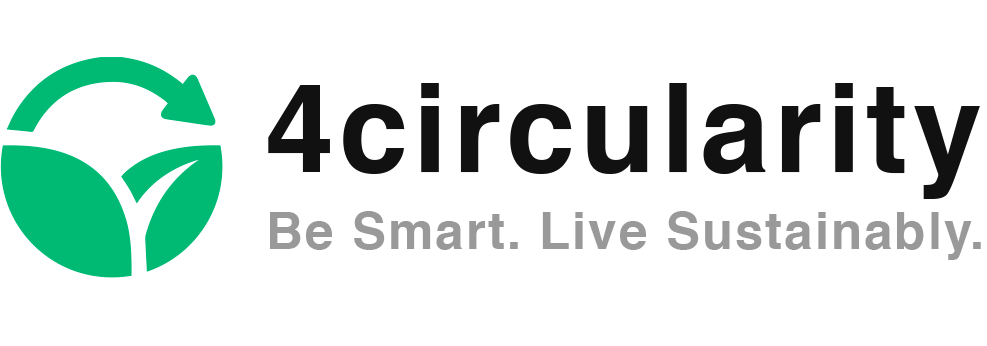A supply chain is a network between a company and its suppliers to produce and deliver a product or service to the end customer. By the Environmental Disclosure Platform CDP, a company supply chain contains on average 5.5 times as many greenhouse gas emissions (GHG) as its own operations. Supply chain’s share from the overall emissions of the company increases heavily its carbon footprint. The chosen energy sources create a big sustainability challenge for the company whose aim is to reform their logistic system.
The unpredictable piece of the puzzle

People, information and goods are moving all the time. How logistic systems can radically change to become more sustainable without causing interruption or inconvenience to the other pieces of the puzzle? Due to the changing world, a company supply chain is the most unpredictable piece in its business strategy.
Resilient supply chains that adapt to global catastrophes, such as epidemics and climate change related extreme weather conditions are critical components of companies’ holistic sustainability strategies.
Since December last year, Coronavirus (COVID-19) has impacted companies manufacturers in more than a dozen industries. Companies are struggling to manage the growing impact of the epidemic to their supply chains. Creating resilient and adaptable supply chains would ensure the movement of goods and raw materials through the times of disruptions.
The International Transport Forum (ITF), says that a Smart Freight Leadership would lead to efficient and environmentally sustainable global logistics sector. The solutions include reduce of freight transport demand, optimization of freight transport modes, reduce of fossil energy use and increase of load optimization and assets sharing. Restructuring the supply chains will create competitive advantage for companies if the supply chain strategy is made resilient and robust.
Rethinking the supply chain
Water, energy and waste in the company supply chain must be sustainably managed. The supply chain structure of companies must change for the planet but also for social, economic and environmental reasons. World’s global climate has become volatile, uncertain, complex and ambiguous (VUCA) which means that companies need to think of anything that can happen.
Transport is in the TOP3 of the most pollutant industries in the world. In 2019, the energy related global CO2 emissions remained at approximately 33 gigatons. The lower level of CO2 emissions in 2019 compared to the previous years resulted from the expanding role of renewable energy sources, says International Energy Agency (IEA). Other factors included increased use of nuclear power and switching to use natural gas instead of coal and oil. Moreover, slower economic growth in emerging markets and milder weather in most parts of the world, acted as drivers for the lower level of CO2 emissions. However, transport is just one component in the whole supply chain.
What creates volatility and uncertainty in supply chains are world’s scarce resources and increasing extreme weather conditions. Today, 1.75 planets are needed to maintain the standard of living for 7.7 billion people. In 2030, two planets will be needed to support the population if we continue producing and consuming as we now do.
There is no doubt that remarkable changes towards sustainable supply chains needs to take place. The question is not anymore in “why” but more in “how”. How a large transformation is possible to carry out in supply chains? How businesses should prepare for making the changes?
Consequently, sustainable supply chains must be integrated into the business sustainability plan and business strategy. Rethinking the supply chain structure and efficient monitoring systems means finding the most resource efficient way that would at the same time be reliable and prevent the environment from harmful impacts.
The VUCA Approach for supply chains

The VUCA Approach goes through the phases a company must take into account in preventing all possible disruptions in their supply chains. In addition to the environmental impacts, the social and economic factors of supply chains are extremely challenging and necessary to figure out. Companies must prepare for all situations with their second-tier suppliers who sell and deliver materials and goods to the first-tier suppliers who then deliver to the manufacturer. Effective supply chain monitoring is the key to take full control of the whole process.
VUCA= Volatility, uncertainty, complexity, ambiguity
- Volatility in supply chains means an unexpected challenge that might last an unknown period of time. A natural disaster, such as an earthquake or tsunami, creates an unpredictable challenge for the company supply chain. Manufacturers of different components can face disruptions in raw material sourcing that directly affect the availability and prices of materials and goods.
- Uncertainty in supply chains stems from the difficulty to forecast what is selling and where the market is in the future. Customers needs might radically change or some technological innovation might override the product the company is selling. A proactive risk management system that identifies, for example, changes in regulatory environments or customer behavior can reduce uncertainty in some levels.
- Complexity concerns the large network of components, materials, resources and workforce that forms the supply chain. Companies who have operations in many countries face more challenges in complexity of tariffs and cultural values.
- Ambiguity arises from a situation where an appropriate supply chain structure is not in place to be profitable. It leads to inefficiency and missed opportunities because competitors might be operating more efficiently.
How Coronavirus has impacted the global supply chains?

According to the World Health Organisation (WHO) there are more than 125,000 cases with the Coronavirus in 118 countries, as of today. Close to 5000 people have lost their lives and thousands more are in hospital care. What does this mean for the companies operating in areas of restrictions or quarantine?
Coronavirus proves the need for more resilient supply chains. For example, in China and in Italy companies’ manufacturers are suffering from disruptions in work, employees cannot come to the workplace normally and raw materials and components are not received meaning the end products are not being produced or delivered.
From the corporate point of view this means a supply crisis that actually originates from weaknesses in their sourcing systems. Companies could have prevented these shortages a few years back. Coronavirus spreads fast but it is not the first epidemic in the history.
Many companies are dependent on a single company for items they buy directly. The disruption of raw material flow happened mostly because of this.
Companies should know that sourcing from a single supplier is very risky but sometimes options are limited. For example, the world’s lithium miners and suppliers operate almost only in China. Lithium is sourced in targeted areas which makes it a very volatile raw material and sensitive to disruptions.
If the companies’ supply chain monitoring would have been more robust, some of the shortages and disruptions could have been prevented. Therefore, the weaknesses in the sourcing system results in loss of revenue or even as a market cap.
Conclusions on the future challenges
No one knows what is there for us in the future. But what we do know is that the global climate is becoming more volatile, uncertain, complex and ambiguous. Companies have to learn to control the complexity of their supply chains and to look for growth from rethinking the supply chain resilience.
A sustainable supply chain integrates social, economic and environmental climate into the company purchasing process and monitors constantly the suppliers in case of any uncertainties. New technology, such as AI (artificial intelligence) can be used to create a readily available but often costly mapping and monitoring system that spots all traces of future disruptions within minutes or hours.
At this moment, Coronavirus spreads quickly in Europe and in the USA, and it affects negatively to the world economy. It is a threat to our health and to the functioning of sustainable supply chains. However, we do not know yet the most profound impacts it might have. We need to do everything to stop it from further spreading and remember to carefully study the lessons learned once the epidemic is over.
To know more about the Coronavirus impacts to the sustainability matters, I recommend reading the insights of a sustainability enthusiast Franziska in her Multiplied by Millions-blog.


3 Replies to “Future challenges for supply chains”